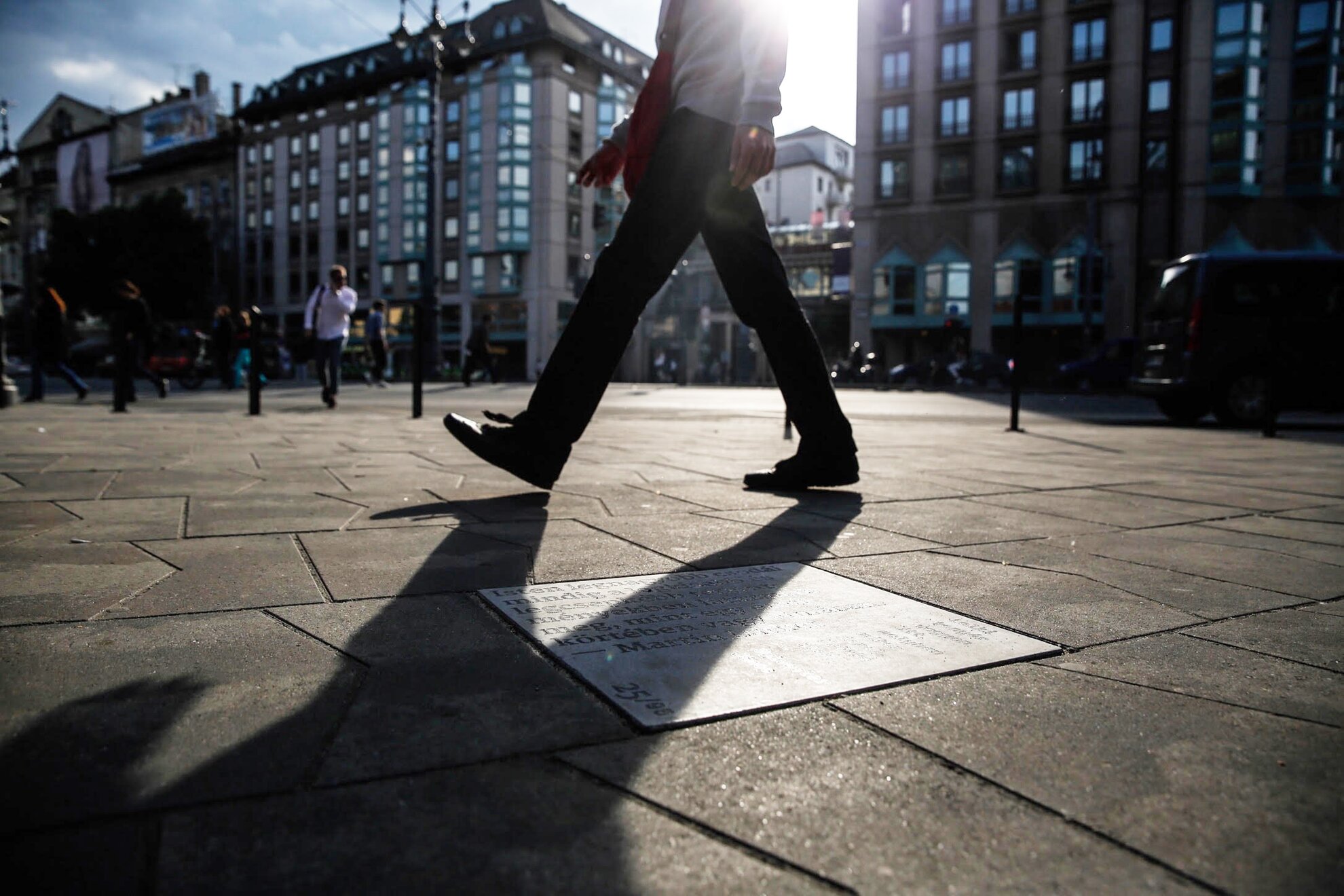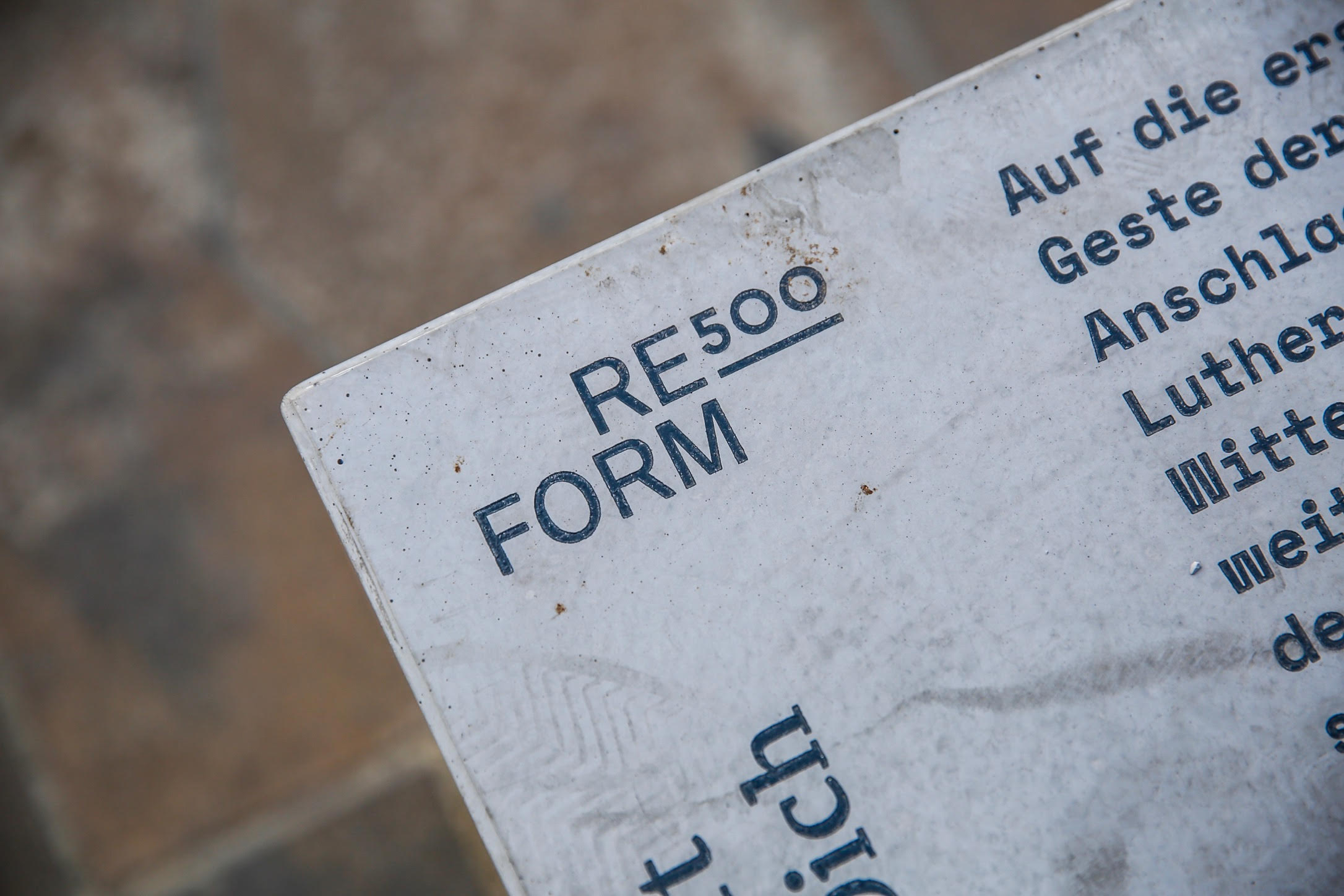Anyone who traverses Budapest’s Kálvin Square should “literary” watch their steps, as this bustling downtown plaza is now covered with a series of eloquent installations to honor the 500th anniversary of the Reformation with short messages carved on paving stones. This freshly inaugurated public-art display consists of 95 square-shaped concrete tablets that replace the original pavement, with this newly installed stonework commemoration representing the 95 Theses of Martin Luther as each one of them features a pair of quotes from revered Reformers and prominent Hungarian literary figures.
The movement of the Reformation started half a millennium ago, when Martin Luther nailed his contentious 95 Theses to the gate of the Wittenberg Castle Church in 1517. Several progressive thinkers, writers, and preachers followed his footsteps during this shift in religious and cultural paradigms, including influential French theologian and reformer John Calvin (“János Kálvin” in Hungarian), for whom this central-Budapest transport hub is named. The Reform500 installation was designed by Hungarian graphic artists Ákos Polgárdi and Levente Szabó, and commemorates this Protestant movement and its far-reaching cultural effect.

Featuring 95 decorative tablets, the public display highlights meaningful quotes of reformers and local literary figures about the influence that this religious revolution had on our language and literature.
The stone-carved excerpts are no longer than an ordinary SMS, and the artists aimed to present the universal and Hungarian, as well as the sacred and secular connections of the Reformation to passersby navigating Kálvin Square.

The messages are presented in Hungarian and in German, and anyone traversing the square who speaks either of these two languages can immerse in thoughts and wisdom related to the Reformation. The innovative installation will enhance Kálvin Square through October, and at the end of this year all of the stimulating tablets will be offered for voluntary adoption in various settlements of the Hungarian countryside, while Kálvin Square will be restored with its original pavement.Those who would like to browse the thought-provoking inscriptions can log onto the project’s official website, which features a virtual map showcasing the installed tablets.




